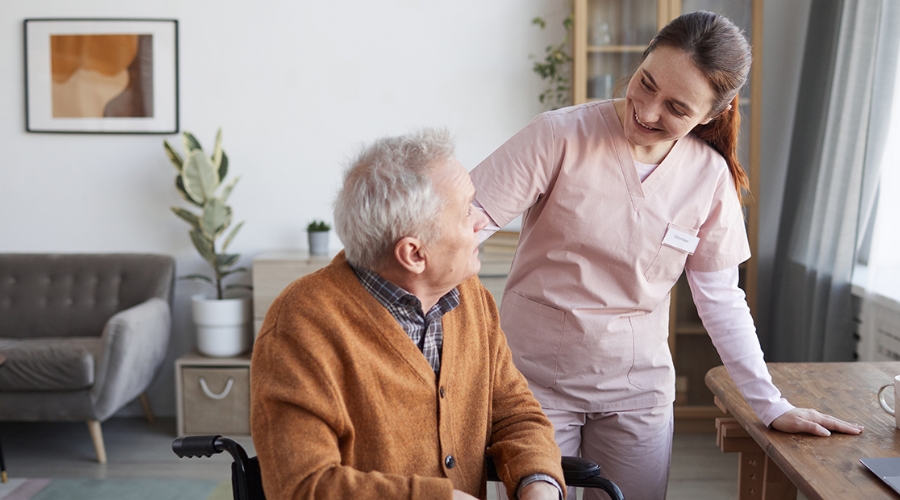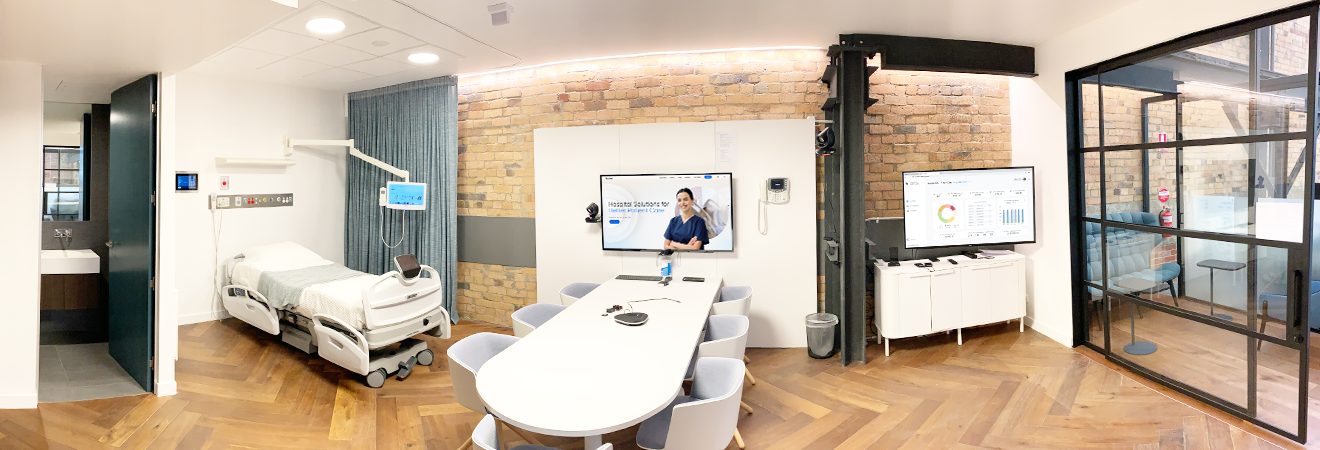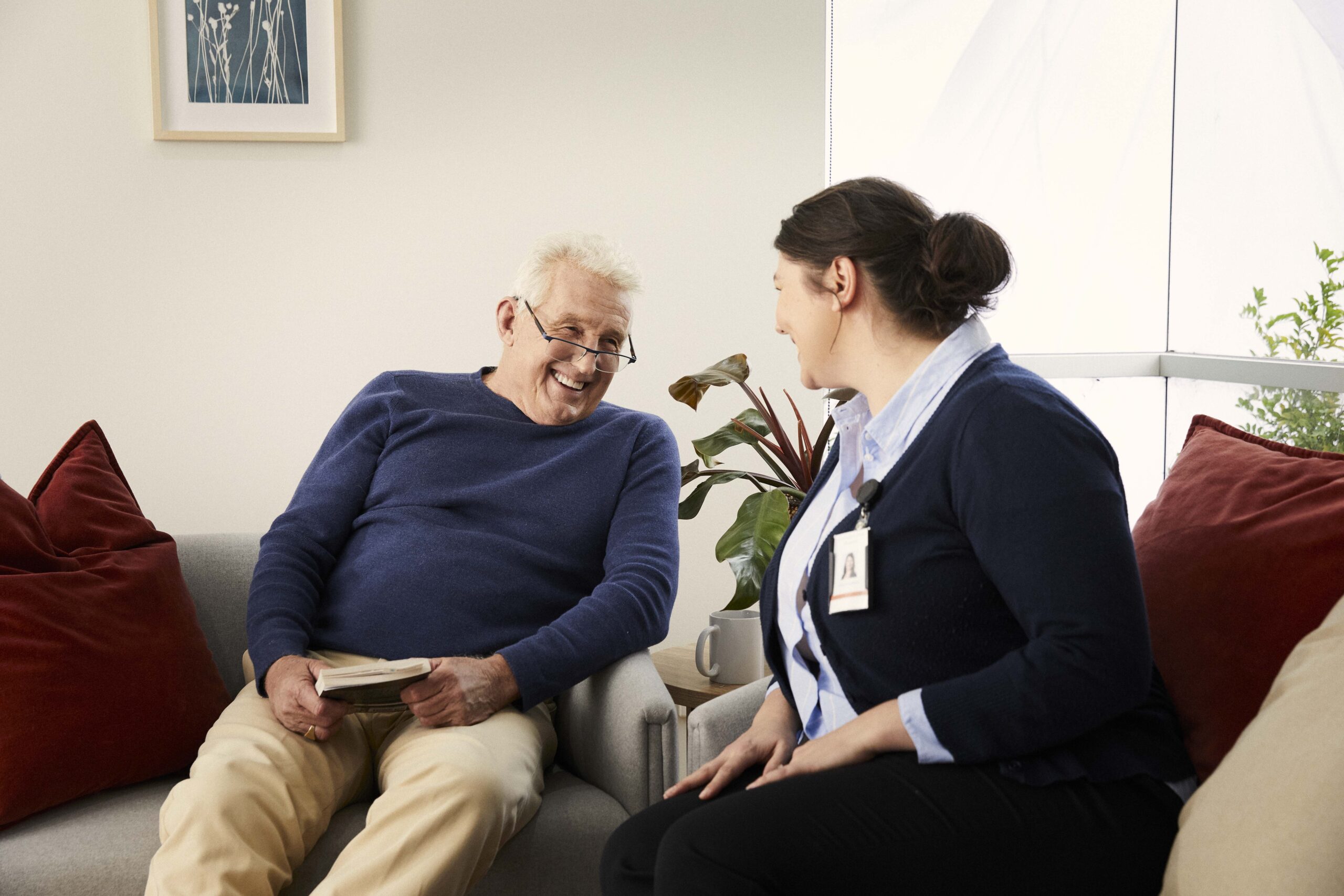
Share:
Opinion piece by: Dr. Vickie Knight – PhD, MHScEd, BN, Clinical Services Executive, Rauland Australia.
The need to protect nurses and physicians in home environments has accelerated as a direct result of disruptions caused by COVID 19, an increase in mental health issues and the push to keep elderly people living at home longer.
More and more healthcare workers are calling for devices that can protect them in the home such as mobile duress. Duress needs to be mobile as workers may not be able to reach fixed alarms and responders don’t know where they are if they move. The concept of ‘hospital in the home’ or virtual care has gained traction and will only accelerate in future years. Violence incidents are on the increase Occupational violence against healthcare workers is a global problem with a systematic review conducted by researchers Liu et al showing a whopping 61.9 per cent of workers reporting exposure to occupational violence. The same researchers also found that healthcare professionals are more vulnerable to occupational violence than people employed in other occupation¹.
Further they found that compared to European countries, Australasia and North America had higher rates of violence committed by patients in the workplace but suggested this difference may be related to under reporting in European countries. The same researchers also found incidents of physical violence were highest in mental health and emergency department settings and in nurses and doctors, those working in urban settings and clinical staff working longer hours¹.
Technological advances
Throughout history pandemics have driven rapid changes in health care and COVID-19 is no different. Since COVID 19, health has been innovating. New triaging models, open-air consultations, online assessment tools, smartphone symptom-checkers, observation management at home such as antenatal and external cardiac monitoring have been implemented. Mobile duress is the next frontier to dramatically change the working conditions for health professionals working in the home.
Mobile duress can save lives
Hospitals are increasingly turning to mobile duress as a way of increasing protection for healthcare workers in the home. Rauland Australia has begun deploying an innovative smartphone personal duress app in hospitals with preliminary results looking very positive. Mobile duress allows for room level accuracy and tracking of the healthcare worker if they are on the move. Mobile duress uses RTLS tracking in the community to pinpoint the location of the device and therefore the healthcare worker. It also has a fall alert so that if a worker falls a duress alarm is automatically triggered after 15 seconds. The app also reassures the professional that the alarm has been sent and a response team alerted.
Technology improves efficiencies
Hospitals are increasingly seeking innovative technology solutions to create greater efficiencies when healthcare workers are in a home environment. ‘Hospital in the home’ is growing as a direct result of three society changes. Mental health issues are rising, older people are now kept in the home longer and COVID 19 has driven the need to keep patients out of hospitals to minimise transmission cases. Technology is the answer to greatly improve efficiencies between the hospital and homecare workers. Early adopters are set to reap significant returns and most importantly keep staff safe
Prioritising health worker safety
Mobile duress technology provides a layer of protection to healthcare workers so they can work with confidence, knowing that should anything happen they have the support they need. By using such solutions that provide quick response time and accurate location information, which can be invaluable in a crisis, healthcare providers can ensure their staff have a mechanism in place that is always looking after their safety no matter where they are. Providing peace of mind to healthcare workers about their safety will undoubtedly contribute to a better working environment and overall staff wellbeing.
References:
1 Liu J, et al. Occup Environ Med 2019;76:927–937. doi:10.1136/oemed-2019- 105849
Share:
Related Content

- 7 February 2025
- 5 min read
Effective Real-Time Location Systems (RTLS) in Healthcare: How to make the right choice for your facility’s needs
Understand the key considerations for healthcare decision makers when investing in RTLS-based digital health solutions.
- Enterprise
- Hospital
- Aged Care

- 6 January 2025
- 5 min read
Your Gateway to Better Care: Our Concentric Care platform in action
Our Experience Centre offers healthcare professionals a hands-on experience with our digital solutions that enhance patient care and transform healthcare delivery.
- Hospital
- Aged Care
- Rauland

- 25 October 2024
- 5 min read
Future Proofing Aged Care: Embracing Enterprise Platforms for Greater Resident Care
Future proof your aged care digital health solutions by embracing enterprise platforms that consists of end-to-end solutions with simple, standardised and intelligent care workflows.
- Aged Care

- 7 February 2025
- 5 min read
Effective Real-Time Location Systems (RTLS) in Healthcare: How to make the right choice for your facility’s needs
Understand the key considerations for healthcare decision makers when investing in RTLS-based digital health solutions.
- Enterprise
- Hospital
- Aged Care

- 6 January 2025
- 5 min read
Your Gateway to Better Care: Our Concentric Care platform in action
Our Experience Centre offers healthcare professionals a hands-on experience with our digital solutions that enhance patient care and transform healthcare delivery.
- Hospital
- Aged Care
- Rauland

- 25 October 2024
- 5 min read
Future Proofing Aged Care: Embracing Enterprise Platforms for Greater Resident Care
Future proof your aged care digital health solutions by embracing enterprise platforms that consists of end-to-end solutions with simple, standardised and intelligent care workflows.
- Aged Care
